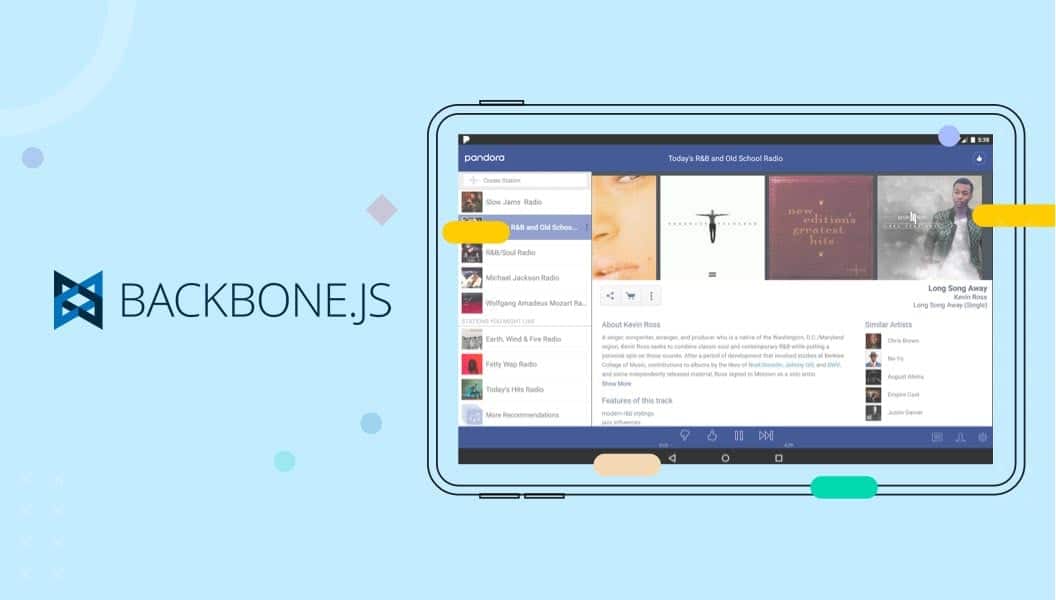If you’re looking to develop complex web applications or mobile apps, you can choose from plenty of development frameworks. However, Backbone JS stands out among its competitors for its use of convention over configuration and modular architecture, making it one of the most popular JavaScript frameworks. Here are five reasons it’s the Backbone of many successful applications today!
Top Benefits of Backbone For Web & App Development
1) Backbone JS Offers an MVC Framework
Backbone offers a Model-View-Controller (MVC) framework explicitly designed to handle the complexities of web and app development. The MVC pattern separates a web application into three parts: model, view, and controller. This design pattern has many advantages, including modularity, scalability, reusability, and ease of understanding, making it a popular choice in web and app development.
In addition to providing an MVC architecture, this JavaScript library also provides scaffolding tools, making it easy for developers to build complex web applications with very little code.
For example-
As your app grows, you can use Backbone’s MVC pattern to break it down into smaller modules that are easier to understand. You can also reuse entire sections of your code from one project on another if they’re logically grouped as components of the same type, such as a Login Form or Shopping Cart page.
2) Backbone JS Is Lightweight
Backbone is the perfect library for small applications with a limited scope. It’s lightweight and implements just enough of the MVC design pattern to make it easy to build an application. The library’s simplicity makes it easy to learn and use, which is why many developers new to web development choose Backbone as their first framework.
For example- when you create a RESTful API or SPA that doesn’t need all the features of AngularJS or EmberJS, Backbone will do just fine. Using this type of architecture, you can develop your backend code in PHP or Ruby on Rails while your frontend is developed in JavaScript with Backbone – this gives you both speed and scalability.
3) Backbone JS Promotes Code Reuse
Code reuse is just one of the benefits of using Backbone.js. Here are five more reasons how code reuse can be accomplished with this JavaScript framework:
- Developers have control over their code.
- The framework allows a separation between models and views.
- Backbone gives developers a sense of clarity by not having to worry about organizing files.
- It provides an excellent way to organize data through models, collections, and views.
- Developers have complete control over where they want their custom logic in their applications because the library doesn’t dictate what should happen in different parts of an application.
Backbone.js also helps minimize dependencies on third-party libraries that may not always work as expected (i.e., jQuery).
With Backbone, developers don’t need to include or manage external dependencies or set up communication across multiple DOMs like they would with other frameworks like AngularJS. So, if you’re looking for a JavaScript framework that promotes code reuse and has minimal dependencies, consider using Backbone.js.
4) Backbone JS Supports RESTful APIs
Backbone.js is a JavaScript library that provides structure and organization to the code in your web application or single-page app. It does this by simplifying the development of dynamic, single-page applications. One of the strengths of Backbone is its ability to support RESTful APIs, which makes it easy for developers to create data-driven web applications. It can be used as a framework for creating simple apps with some HTML templates or more complicated projects with heavy use of templates and multiple views.
Another strength of Backbone is its ability to work as a framework or library, depending on its use. It has been used in both small and large projects, making it suitable for all types of development. That flexibility can be attributed partly to its support of asynchronous data loading and RESTful APIs.
For instance, if an API returns JSON formatted information when requested, Backbone will automatically parse and load the data, making it available to you when needed.
5) Backbone JS Has a Large Community
The other reason you may consider using backbone js for web and app development is that it has a large community. A large community of developers has contributed their time and energy to building this framework. It is the fastest-growing JavaScript MVC framework on GitHub and is used by companies like Groupon, Yahoo, Walmart, Twitter, LinkedIn, Pinterest, and many more.
Thus, because it’s so popular, plenty of tutorials and documentation are available to help you get started. And because there are so many tutorials and docs available, it’s easy to find answers when a developer is stuck with your project.
Conclusion
Backbone.js is a lightweight JavaScript library that provides a structure for your web and app development projects in a way that scales from small single-page apps to large, complex web applications. It’s well-documented and used by many top names in the industry. It has robust support in the Node ecosystem and is easily extended with plug-ins.
You can hire backend developers from OVE. They know how to work on the frontend interface and design elements. So, with many advantages over traditional web frameworks, there’s never been a better time than now to choose Backbone JS for web and app development.









